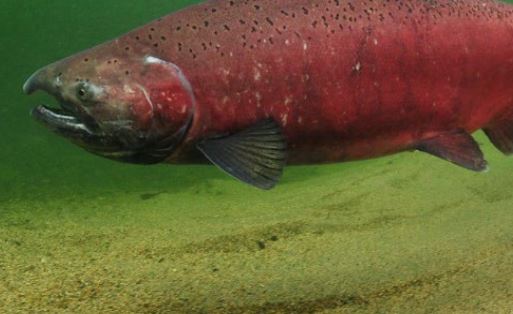Cowichan River salmon counts have rebounded in a big way.
According to the Department of Fisheries and Oceans, in 2009, 540 adult chinook went through the counting fence downstream at Allenby Road. Now the count is ten times that amount.
Fisheries Biologist Kevin Pellett said there is more good news, in that the Cowichan River fish are predominantly wild.
“The majority of fish returning now are wild which are naturally produced in the river, which is somewhat uncommon,” said Pellett. “A lot of the other systems on the east coast of the island are dominated by hatchery fish. Cowichan is actually maintaining, or rebounding with wild fish which is a really good indication that the river itself and the freshwater habitat is productive and maintaining that run.”
Pellett said the 5,600 adult chinook (three-years-old and up), already counted, fall within the normal range of fish counted before the numbers dropped dramatically a number of years ago (four thousand to eight thousand).
He said the Cowichan River is largely made up of jacks and young adults.
“Chinook, they go out to sea in any given year and actually come back in multiple years. They can come back the next fall, which would be a two-year-old jack, or the following year, which would be a three-year-old” said Pellett. “They can come back all the way up to seven or eight-year-old. The Cowichan River chinook are mainly two-year-old jacks and age three and four adults, we only get a handful of age five adults, which are the really big ones.”
Pellett said the chum count is also expected to rebound from a particularly poor 2019 run when the total fish count was 95-thousand, less than half the historical average (200-thousand to 300-thousand).
Forty-five thousand chum have gone through the fence so far this year and the goal is 160-thousand.
Pink salmon are very rare, as Pellett said there are only a few hundred left in the system.
While he can’t say definitely why the numbers of chinook and chum have increased, Pellet said, “I think there are a number of factors that are contributing to that. One of the big ones that shouldn’t be overlooked is back in 2006, as part of the declining productivity in Cowichan, there was a giant habitat restoration project that occurred up in Stoltz Bluff.
“In the summer of 2006, basically the river was realigned and there was a big clay bank there that was actually isolated from the river, so that sediment was actually impacting the spawning habitat for the lower 25 kilometres of the river,” said Pellett. “The idea was to separate that sediment so it no longer came down in the wintertime and impacted those spawning beds. I believe that’s actually had a pretty big impact on freshwater productivity and we started to see increased returns shortly thereafter.”
He said water storage, water use, and spring flows have been local issues and several groups and committees have been formed to help with water management and that’s been beneficial to fish.






